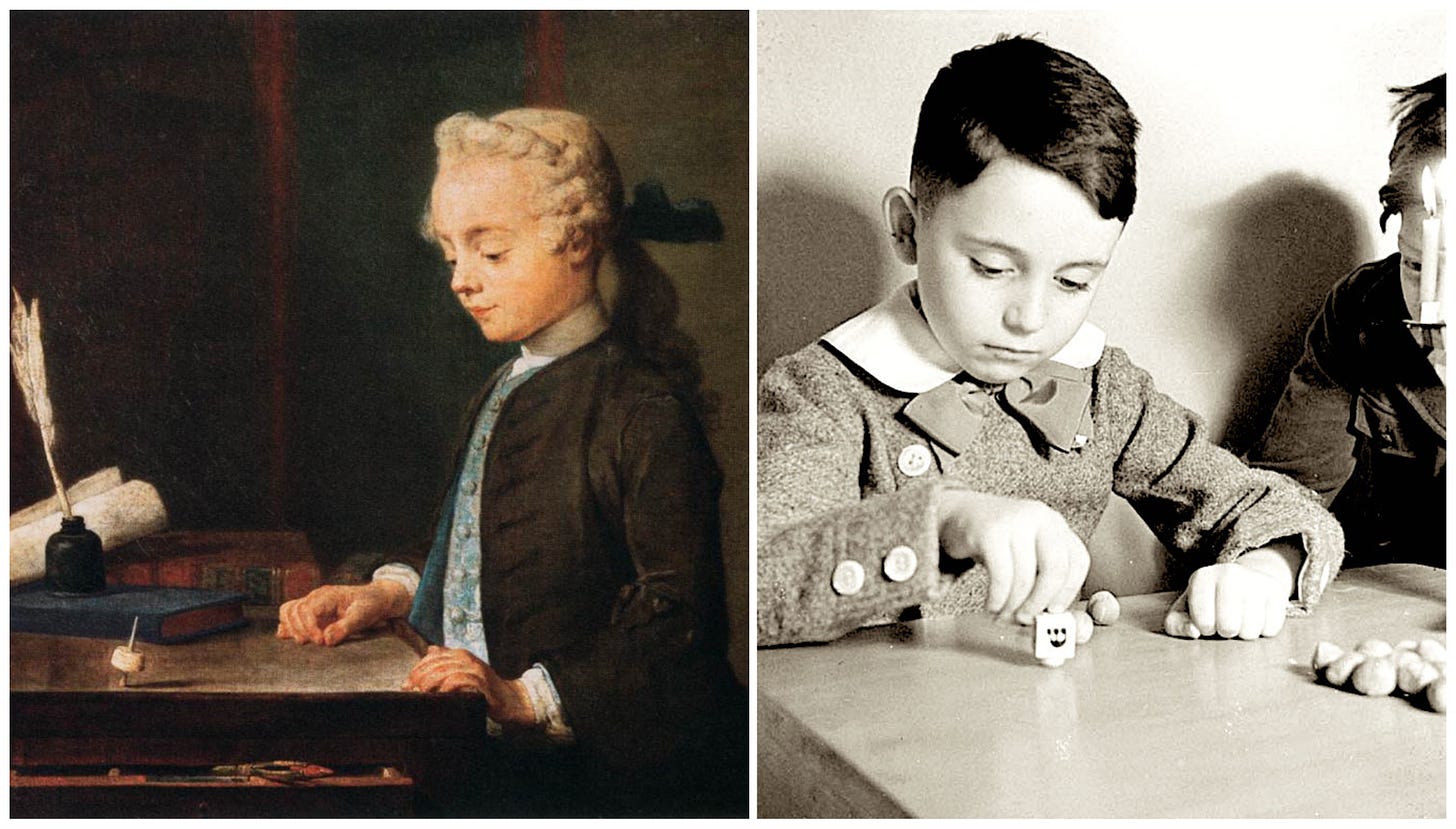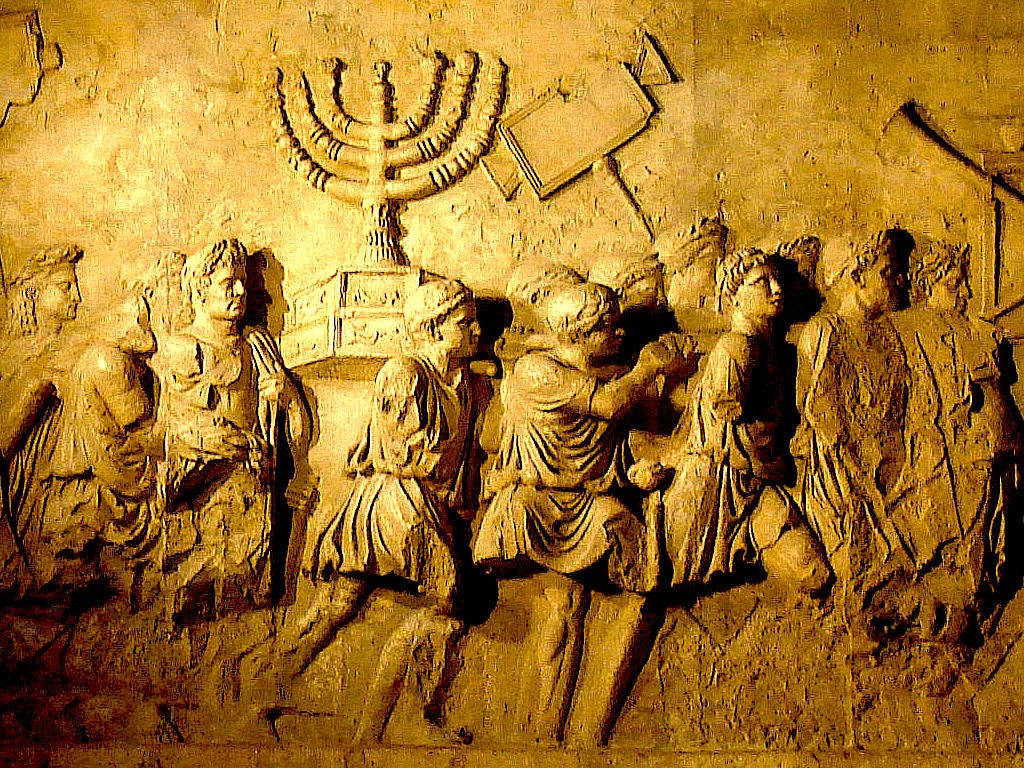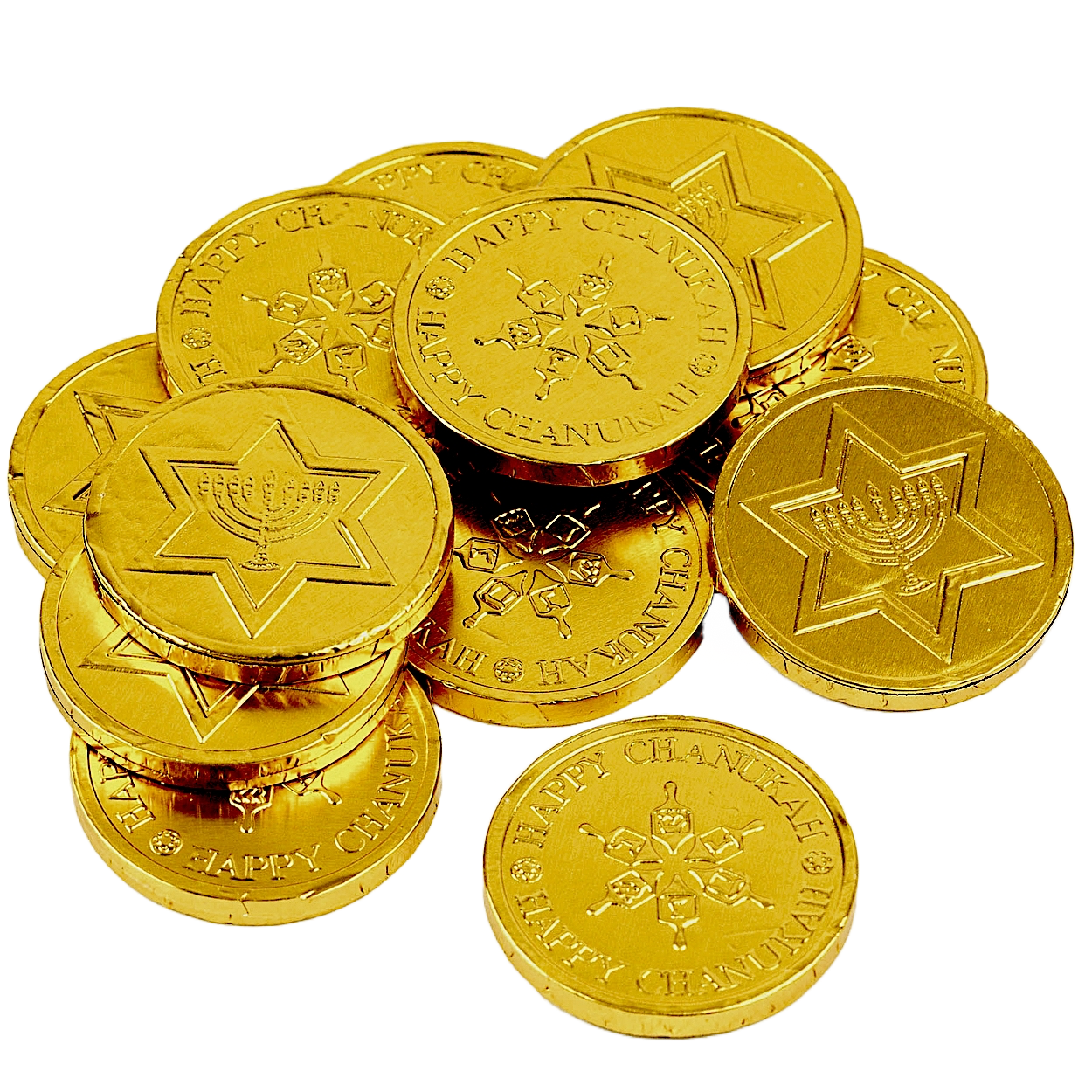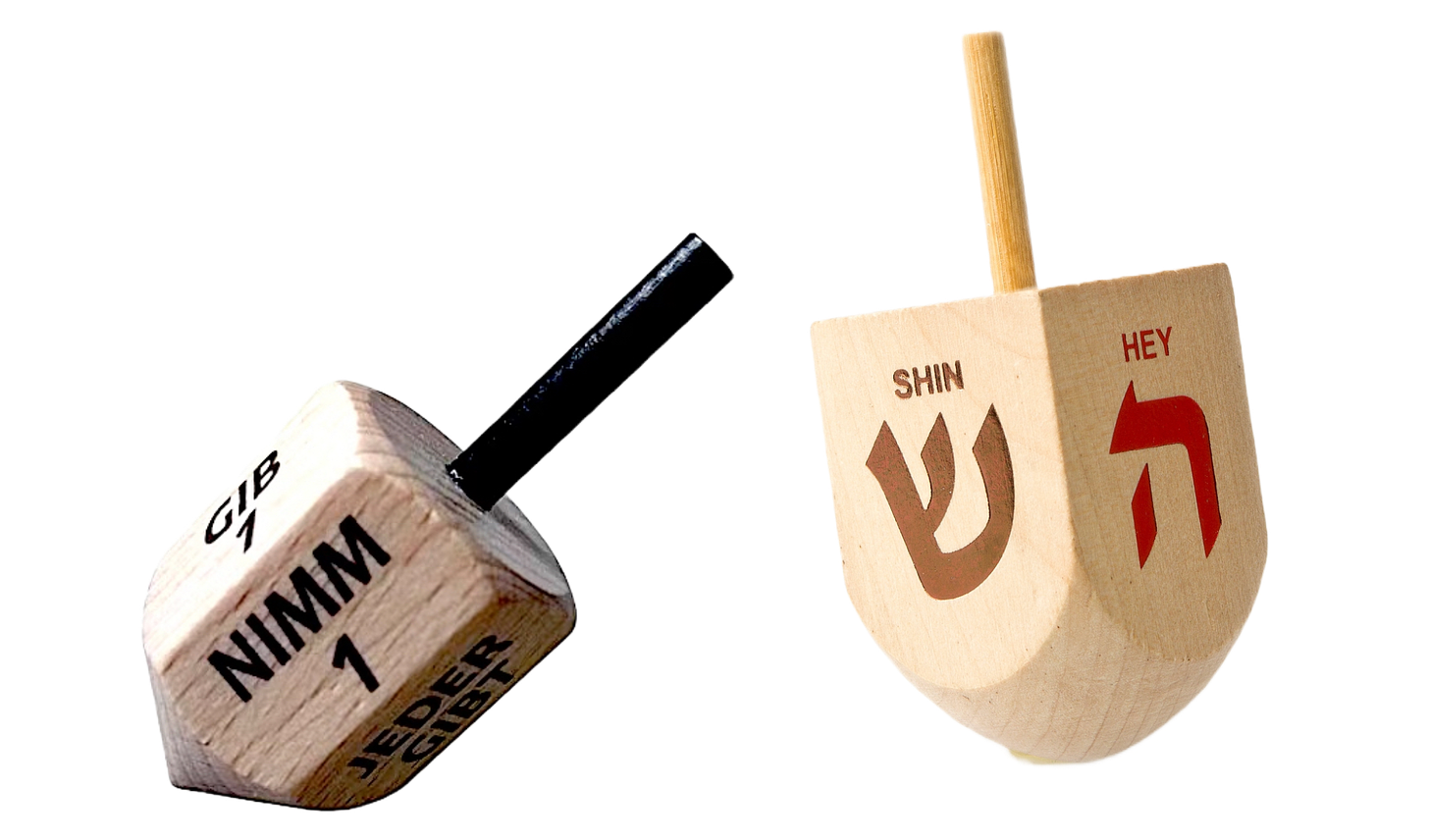Edited by David Swanson
It’s Chanukah, day two of the Festival of Lights, where we celebrate the victory of heroic Jews over the bloated, overstretched Seleucid Empire in the second century C.E. It’s an emphatically postbiblical story, with God an unseen presence in the tale, and a relatively minor holiday in the Jewish pantheon—dwarfed by Passover, the High Holy Days, and fast days of solemn prayer you have probably never heard of, like Tisha b’Av or Shiva Asar b’Tamuz.
Chanukah as it’s presently celebrated is a fun, chill holiday and one I enjoy very much, centered around fried food, festive candelabras, chocolate, and gambling. The actual story behind the holiday, about a small band of religious zealots committing war crimes against Jews they deemed too assimilated, was retroactively given a softer focus by the Talmud’s Sages. Reasonably concluding that a holiday celebrating violent revolution might poorly serve a people in exile, they added in the story of the miracle of the oil lamp a few centuries later. In keeping with the Sages, most of the traditions associated with Chanukah today have developed within the last few centuries, at any rate the fun ones—and supplied, ex post facto, with convenient religious apologia.
Take latkes, for example. Delicious, beloved latkes. As ancient as the practice of frying things in oil is, we all know potatoes didn’t arrive in Europe until after the Columbian interchange, and there are a suspicious number of Central and Eastern European analogues to the latke, like Ukrainian deruny or Czech bramboráky. The idea that a bunch of Jews sitting around playing dreidel for a stack of chocolate coins represents an unbroken line of tradition dating back to the Second Temple, when Maccabees slaughtered elephants on the streets of Jerusalem, is a bit of sweet twaddle, the sort of semi-harmless hokum I got served in huge helpings as an Orthodox kid. It seems particularly apropos that gelt—the ubiquitous gold-foil-wrapped waxy chocolate coins doled out to children and snacked on furtively by adults at this time each year—has a very concrete, quite recent historical origin. Money is among the first things kids get lied to about, even when it isn’t real.
Gelt, it turns out, isn’t a beautiful tradition of commemorating the first coins minted by the Hasmonean dynasty, an enduring symbol of their establishment of an independent Jewish kingdom that had shucked off the fetters of imperial rule. According to scholars and historians and all the lovely people who debunk things for a living, the giving of gelt—which is Yiddish for “money”—dates back no further than perhaps the sixteenth century, when it became traditional to give older yeshiva students, who struggled with penury like all grad students since time began, a little extra to make it through the depths of winter.
By the seventeenth century, in shtetls across the Pale of Settlement, this evolved into a Chanukah practice of tipping the often-itinerant minor religious figures who helped Jewish communal life function: ritual kosher slaughterers, cantors, maggidim (itinerant preachers), beadles. It took the advent of the nineteenth-century concept of childhood as a precious and vulnerable chapter of life for gelt to become something that one gave to one’s children—and a full-on collision with American consumerism for that money to transmute into chocolate and presents.
American Jews, it turns out, didn’t celebrate Chanukah for the most part—as mentioned earlier, it’s a very minor holiday—until the fin de siecle, when its potential as an alternative to Christmas made it appealing. Nobody wants to be left out of a festival of lights, so Chanukah got pulled out of the drawer of obscure holidays and put up against the nascent Yuletide commercial juggernaut. Seeing a lucrative niche, candy stores, particularly in New York, began supplying sweet novelties: there were chocolate Maccabees and chocolate latkes, but it was Loft’s Candies 1920s innovation of gold-wrapped chocolate coins that stuck. (Historian Debbie Prinz points out that these may have been directly lifted from the Dutch custom of handing out chocolate “geld” on St. Nicholas’ saint’s day, proving once again that the better parts of inspiration are often carefully chosen thefts.)
As for dreidel, the rudimentary spinning-top game that introduced me to the concept of gambling? Its treacly backstory is remarkably fleshed-out—perhaps because the ubiquity of the game is somewhat baffling to modern Hebrew school students who have encountered Nintendo Switches and similar—and apparently, according to a variety of historical sources, is utter nonsense. Here’s the version I was taught as a kid, sourced from Chabad.org, a Hasidic sect whose most famous practice is aggressively proselytizing to secular Jews:
There is a Hebrew letter embossed or printed on each of the dreidel’s four sides. These four letters form the acronym of the phrase: Nes gadol hayah sham, “a great miracle happened there,” a reference to the Chanukah miracle that transpired in the Land of Israel.
It is told that the dreidel, known in Hebrew as a sevivon, dates back to the time of the Greek-Syrian rule over the Holy Land—which set off the Maccabean revolt that culminated in the Chanukah miracle. Learning Torah was outlawed by the enemy, a “crime” punishable by death, the Jewish children resorted to hiding in caves in order to study. If a Greek patrol would approach, the children would pull out their tops and pretend to be playing a game. By playing dreidel during Chanukah we are reminded of the courage of those brave children.
And here is the ice-cold and damning summation from the Folklife Editor at the Library of Congress, Stephen Winick, educating the public with a vengeance:
Jews borrowed the dreidel from their Christian neighbors, probably in German-speaking Europe, probably in the 18th century. By then, the game was popular throughout Europe, and both the top itself and the gambling game associated with it were known in English as “teetotum.” (The game was sometimes also known as “put and take.”)
The English antiquarian Joseph Strutt (1749-1801) provides useful background in his posthumous treatise “Glig-gamena angel-deod,” or, “The sports and pastimes of the people of England”:
When I was a boy the tee-totum had only four sides, each of them marked with a letter; a T for take all; an H for half, that is of the stake; an N for nothing; and a P for put down, that is, a stake equal to that you put down at first.
These are, of course, identical to the rules of the dreidel game, which means the game was being played by Christians in England by the 1750s…In Germany, these rules were represented by four German letters: G for ganz (all), H for halb (half), N for nischt (nothing) and S for schict (put). These words were translated into Yiddish, which is closely related to German but is written in Hebrew letters. The resulting tops were marked with a Gimel for gants (all), a Hay for halb (half), a Nun for nit (nothing), and a Shin for shtel (put). The idea of “nes gadol haya sham,” or “a great miracle happened there” was just a later rationalization of the four letters, which were themselves transliterations of Germanic abbreviations for the actions of the game into Hebrew characters.
Brutal! The history of the dreidel is all spin; the N stands for “nothing,” not “miracle.” If that isn’t a fantastic metaphor for disillusionment, then put me on the table and twirl me til I fall over, and take away all my money.
It’s not just Chanukah that has me mulling over myths about money, and I didn’t put together this shambolic column purely because I enjoy substituting sweet stories with grubby truths (although it is a hobby of mine). The central myth about money that’s been scrabbling at me is a story so utterly pervasive in the U.S. that it’s almost impossible to deconstruct for a lot of people. This is, as the poet Ilya Kaminsky puts it, “our great country of money,” and the chief myth on order is rich people are rich because they work hard, and rich people are better than you; the richer they are, the better and smarter and harder-working they are.
The Sword and the Sandwich is a newsletter about serious extremism and equally serious sandwiches. Please consider supporting this work with a paid subscription:
This has been a golden week for people who hate this myth. The richest man in the world has been making a red, nude ass of himself in public, throwing an escalating series of unhinged tantrums, tanking his own stock, and peppering it all with grandpa-level memes and the shallowest possible aphorisms, shared to an audience of millions. He is still impossibly wealthy; there have been no consequences to his behavior. Just to add to the picture, billionaire author J.K. Rowling has fully declared herself a member of a transphobic hate cult, and compared people who do not want to buy the upcoming Harry Potter video game to book-burning Nazis.
It’s all a very potent illustration of the ways in which extreme wealth insulates and isolates a person, and when such an individual makes themselves subject to the critiques of the non-subservient public, some portion of them goes absolutely fucking insane. Yet both these figures have an enduring human centipede of sycophants, eager to share their increasingly unhinged vendettas. The idea that rich and good are synonymous is remarkably hard to dislodge, and hate makes its own bedfellows.
Of course, the idea that the dreidel stems from the courage of Jewish children under an oppressive Seleucid regime and the notion that billionaires are inherently virtuous are not equally malignant. The former is mostly harmless malarkey, the latter a symptom of a profoundly broken system that leaves some marinating in the poison of überwealth and most struggling in precarity. Still: the real story of dreidel is a beautiful one in its own way, one of a people who have existed in many kinds of exile for millennia, picking up and transmuting the customs of their global neighbors and weaving them into the fabric of tradition.

The sanitized story of the dreidel is a falsehood born of teleology—a Zionismized version of Jewish history that would like to simply elide the past few thousand years, draw a bright unbroken line between us and the Hasmonean warriors who slew war elephants for God, and allege we never learned or changed or grew before the State of Israel appeared. (The Zionist lens on Jewish history tends to overlook or outright denigrate the entirety of Jewish history outside Israel, which is the vast majority of it.)
The real story of gelt is similarly a story of complex European Jewish community networks, American exilic adaptation and commercialism, and how to survive as a religious minority in lands of unquestioned Christian dominion. And the real story about money is that genius and passion and world-changing ability aren’t always accompanied by pocketfuls of blood emeralds, or a miraculous ascent to the upper echelons of commercial success. Similar or greater ability can be found everywhere, but is more often than not starved of opportunity, snuffed out by poverty or prejudice or both. It’s not a sweet myth; it’s an unsettling truth, with tragedy all along the way, a thousand little histories, a game of chance called put-and-take where some get all and some get half and some get nothing. You’ll forgive me if, compulsively stripping the myths off everything I see, I’ve grown to like it better than the lie.









Just this morning I was chatting with my neighbor about this festival and wondering about the origins of the Driedl! Thisi email is definitely a NES for me!
I knew some of this, but not all — had no idea how recent the tradition of gelt (real, not chocolate) is. Shared with my family.
It's ironic that the holiday celebrating a war against assimilation is today the most assimilated of the Jewish holidays (in the US, at least).